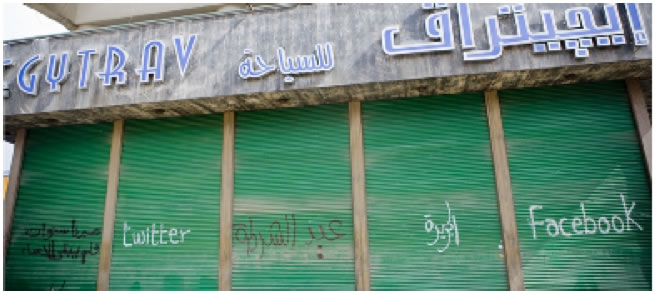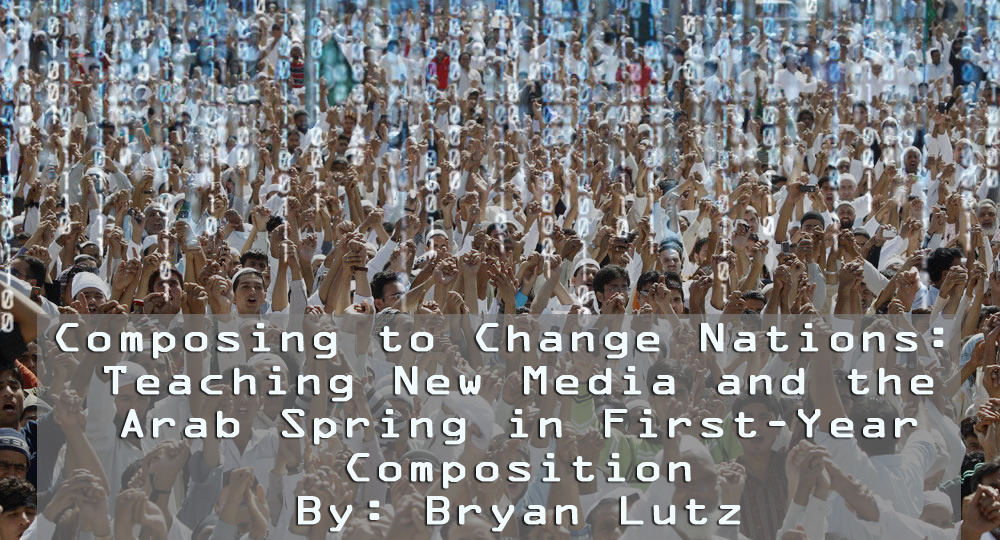The Arab Spring: Revolutions in Tunisia and Egypt
Ground Efforts
Was new media the catalyst for these revolutions? Some are not so sure. Eugueny Morozov in his article “The Dark Side of Internment” (2011) describes how the differences between these revolutions and similar efforts in more authoritarian states, like Iran, is that the governments there were unwilling to use military force against the protests, unlike Iran, who is more willing to use social networking to find political dissidents and engineer their disappearance (though Tunisia and Egypt were accused of the same). Morozov provides us with a strong caution “In the hands of an authoritarian regime, [social networks] can be a tool of oppression” (pp. 1). In light of this, it is important to note that the military of Tunisia and Egypt were unwilling to use violence against the protesters.
And when it comes to the internet there is always the question of who has access. The number of internet users in both Tunisia and Egypt nearly doubled between 2008 and 2009. According the the CIA World Factbook, Egypt ranks 21st in the world in terms of the number of internet users; Tunisia, by contrast, ranks 60th. Though internet access may not be as strong as, say, in the United States, in these countries it is comparatively cheaper and it is safe to say that a great many people in these countries have internet access of some kind. Not unlike our own Generation "M," it tends to be the younger generation who uses the internet. If we know that it is the youth of these nations that are more likely to use the internet and that they are more likely to use Facebook and Twitter, then it is possible that many of the people coordinating the protests were the younger generations who both had internet access and used it to spread their message of democracy to other like-minded individuals. We cannot say, however, that a majority of the population has internet access. As Cindy Selfe (2006) reminds us, technology can create a growing divide amongst people of different ages and socioeconomic strata (pp. 1499-1531). However, consider the images the below:
 |
| Graffiti on a wall in Egypt from MSNBC's photoblog |
 |
| Photo shared on Facebook |
The graffiti art above implies that protestors wished to draw attention to Facebook and Twitter as sources of information. To the right, you see an older gentleman holding a piece of cardboard stating “Facebook.” The message is clear: these social media sites were seen as a wealth of information about the movement and that protesters in the region are doing all that they can to get that message out. Individuals on Facebook and Twitter were organizing and supporting the movement. But as Wael Ghonim (2010), who is largely credited as one of the a leaders of the Egyptian revolution, acknowledges, many of the people in Egypt were on the ground. There seems to be a symbiotic relationship where digital compositions are coupled with participation on the ground. Those without access still found interesting ways to get the message out and were participating even when once removed from internet social networks.
These images show us also that participation of non-youths was also essential to the movement. So what are the affordances of a piece of cardboard, or a spray can? Think again of the civic voluntarism model: Mobilization potential was capitalized by using Facebook and Twitter to coordinated the movements of these resistances. Those who did not have access found any means necessary to encourage those who could in order to captialize on the speed of new media. Recruitment may have also been the message. Anyone who could access these sites could both see the images and messages that are being shared and use the technology to share their own experiences and to encourage involvement in the movement.
